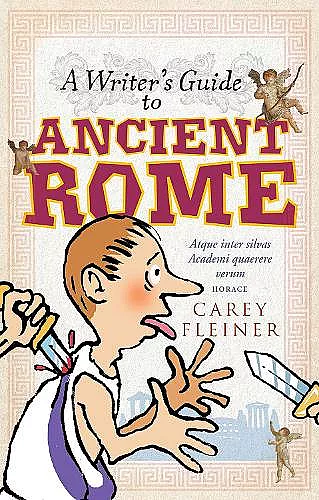A Writer's Guide to Ancient Rome
Format:Paperback
Publisher:Manchester University Press
Published:28th Feb '20
Should be back in stock very soon

‘A really fun idea for a book - and full of great stuff.’
Greg Jenner, Public Historian
This is the perfect guide for any writer who wants to recreate the Roman world accurately in their fiction. It will aid any novelist, screenwriter, games designer or re-enactor in populating their story with authentic characters and scenes, costumes and locations.
Written from a historian’s perspective, this guide pulls back the curtain to show the reader what life in Ancient Rome was really like: what they wore, what they ate, and how they spent their time at work, at home, at war, and at play. Individual chapters focus on different aspects of Romans’ lives, to give you specific knowledge of what they looked like and how they behaved, as well as a broad appreciation of what held their civilisation together, from religion, to the economy, to law and order. You may wish to work your way through the book from cover to cover, or focus specifically on individual chapters as you hone your creative writing skills.
Covering the period between 200 BCE and 200 CE, A writer’s guide to Ancient Rome surveys the vast amount of sources and scholarship on the Classical world so you don’t have to! It outlines current scholarly debates and changing interpretations, suggests further reading, and recommends particular resources to mine for each topic. It gives you plenty to consider while you construct your own Roman world.
'A really fun idea for a book - and full of great stuff.'
Greg Jenner, Public Historian
'Fleiner (Univ. of Winchester, UK) is a scholar of classical and medieval history, and she draws on that expertise to produce an engaging and accessible look at the Roman period between 200 BCE and 200 CE. Her intended audience is authors, game designers, and reenactors interested in re-creating Roman history. Although the concept behind the book is lighthearted, Fleiner provides an accurate look at Roman life. She begins with a brief consideration of Roman identity and then takes up food and clothing, public spaces, law and order, economics, entertainment, and religion. In these chapters, one finds discussion of such gems as “clean-shaven or scruffy” as well as of traditional subjects like patronage, political roles, and deities. The hefty last chapter, "Resources and Suggestions for Further Reading," demonstrates the depth of Fleiner's research. Covering this amount of content in a single volume leaves gaps, and some sections are too brief. However, the book serves as a marvelous introduction to the era for those who are looking to "worldbuild" or learn some basics about Roman history without too much academic brouhaha.
--R. Tait-Ripperdan, Florida Gulf Coast University
Summing Up: Recommended. Lower- and upper-division undergraduates; general readers.
Reprinted with permission from Choice Reviews. All rights reserved. Copyright by the American Library Association.
ISBN: 9781784993184
Dimensions: 216mm x 138mm x 20mm
Weight: unknown
344 pages